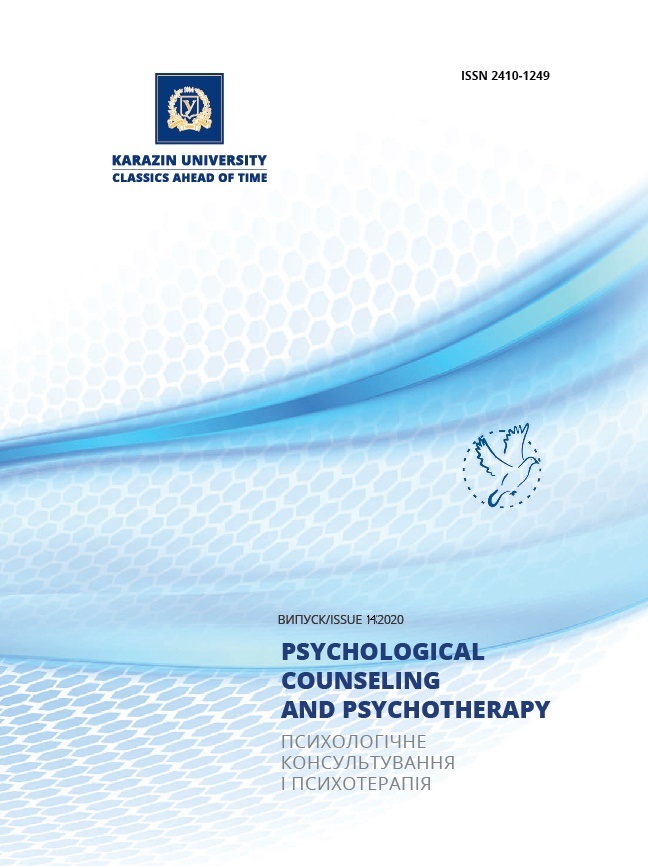Dyspareunia of Nonorganic Origin, Phobic Variant: Case Report
Abstract
The article describes a case with a 22-year-old female patient, who had been in a “common-law marriage” with a 29-year-old man during 7 months. When she sought medical advice the patient informed that she remained a virgin. She associated it with tough upbringing and a hard set that one must not live a sex life before marriage. From 6 to 16 years of her life the patient and her mother were members of the international religious organization “Jehovah’s Witnesses”, where the above set exists. Besides, her mother told the patient that one could engage in sexual intercourses only after registration of marriage, and those girls who allowed themselves to do it before marriage were prostitutes. The patient reported that an attempt to make coitus caused “a spasm of muscles in my vagina” and a severe pain, and for that reason the man could not “enter” her. Before such an attempt the following thoughts appeared: “It is not allowed before marriage, because it will be regarded as adultery. God will be against it”. But a strong desire to make coitus existed. She made a point that she was afraid of a severe pain and haemorrhage that might appear in coitus (she saw twice some porn, where defloration was made hard, resulting in fixation of some fear in her). She believed that the above was still producing its effect on her. At first I thought that the patient had vaginismus of non-organic origin caused by psychogenic inhibiting effects and coitophobia. But later, having drawn an analogy with contraction of muscles during orgasm, I concluded that she did not have the above contraction while attempting to make coitus, but an obstacle to perform it was caused by a pain that developed at attempt of introjection and made her squeeze her legs together, thereby imitating the result of contraction of muscles involved in vaginismus. Therefore the diagnosis of “dyspareunia of non-organic origin, the phobic variant” was made. The following treatment was provided: different cognitive techniques, hypnosuggestive therapy (2 sessions). Recommendations for optimizing the performance of coitus were given. An immediate therapeutic result was achieved with complete resolution of the above problem.
Downloads
References
Alizadeh A., Farnam F., Raisi F., Parsaeian M. (2019). Prevalence and Risk Factors for Genito-Pelvic Pain/Penetration Disorder: A Population-Based Study of Iranian Women, J Sex Med., 16(7), 1068–1077, https://doi.org/10.1016/j.jsxm.2019.04.019.
Diagnostic and Statistical Manual of Mental Disorders. Fifth Edition. (2013). United States: American Psychiatric Association, 947 p.
Glatt A, Zinner S, McCormack W. (1990). The Prevalence of Dyspareunia. Obstetrics & Gynecology. 75(3 Pt 1), 433 436.
Kocharyan G.S. (1987). Приемы рациональной психотерапии в сексологической практике [Rational psychotherapy techniques in sexological practice] Socio-psychological and medical aspects of marriage and family: Abstracts of reports of 3rd region scientific-practical conf. sex therapists, Kharkov, 422–423. (in Russian)
Kocharyan G.S. (2007). Современная сексология [Modern sexology], K.: Nika-Center, 400 p. (in Russian)
Kocharyan G.S. (2013) Гипносуггестивная терапия в сексологической практике: модели интервенций [Hypnosuggestive therapy in sexology practice: intervention models] Health of Man, 2(45), 84–91. (in Russian)
Kocharyan G.S. (2016). Cognitive techniques in clinical sexology, Psychological counseling and psychotherapy, 1(5), 52–58.
Kocharyan G.S. (2020) Диспареуния как клиническая проблема [Dyspareunia as a clinical problem] Health of Man, 3(74), 65–74, https://doi.org/10.30841/2307-5090.3.2020.216073 (in Russian)
Коcharyan G.S. (2020). Hypersexuality: a clinical observation, Psychological counseling and psychotherapy, 13, 87–95, https://doi.org/10.26565/2410-1249-2020-13-09
Международная классификация болезней (10-й пересмотр). Классификация психических и поведенческих расстройств. Клинические описания и указания по диагностике [International Classification of Diseases (10th revision). Classification of mental and behavioral disorders. Clinical descriptions and diagnostic instructions]. (1994). Sankt-Petersburg: ADIS, 304 p. (in Russian)
Mitchell K.R., Geary R., Graham C.A., Datta J., Wellings K., Sonnenberg P, Field N, Nunns D, Bancroft J., Jones K.G, Johnson A.M., Mercer C.H. (2017). Painful sex (dyspareunia) in women: prevalence and associated factors in a British population probability survey, BJOG, 124(11), 1689–1697, https://doi.org/10.1111/1471-0528.14518.
Seehusen Dean A., Baird Drew C., Darnall Carl R., Bode David V. (2014). Dyspareunia in Women, Am Fam Physician, 90(7), 465–470.








